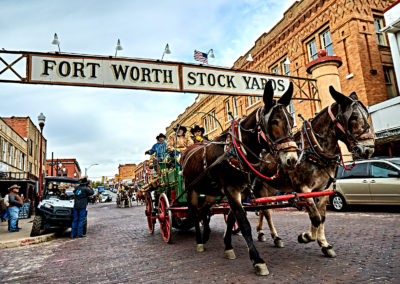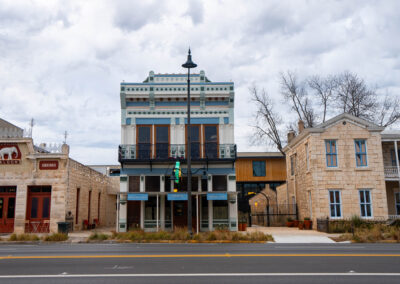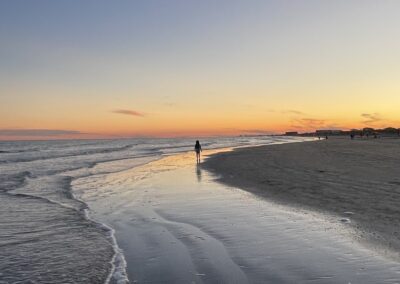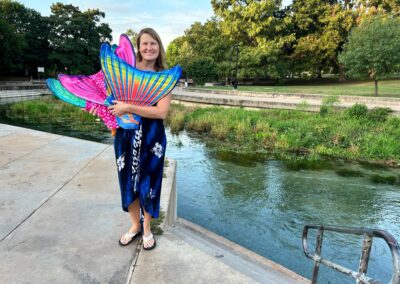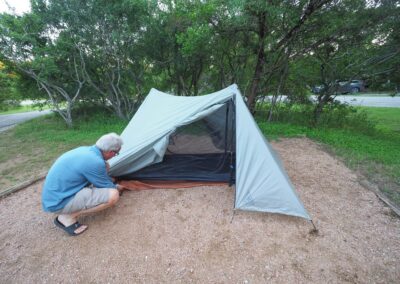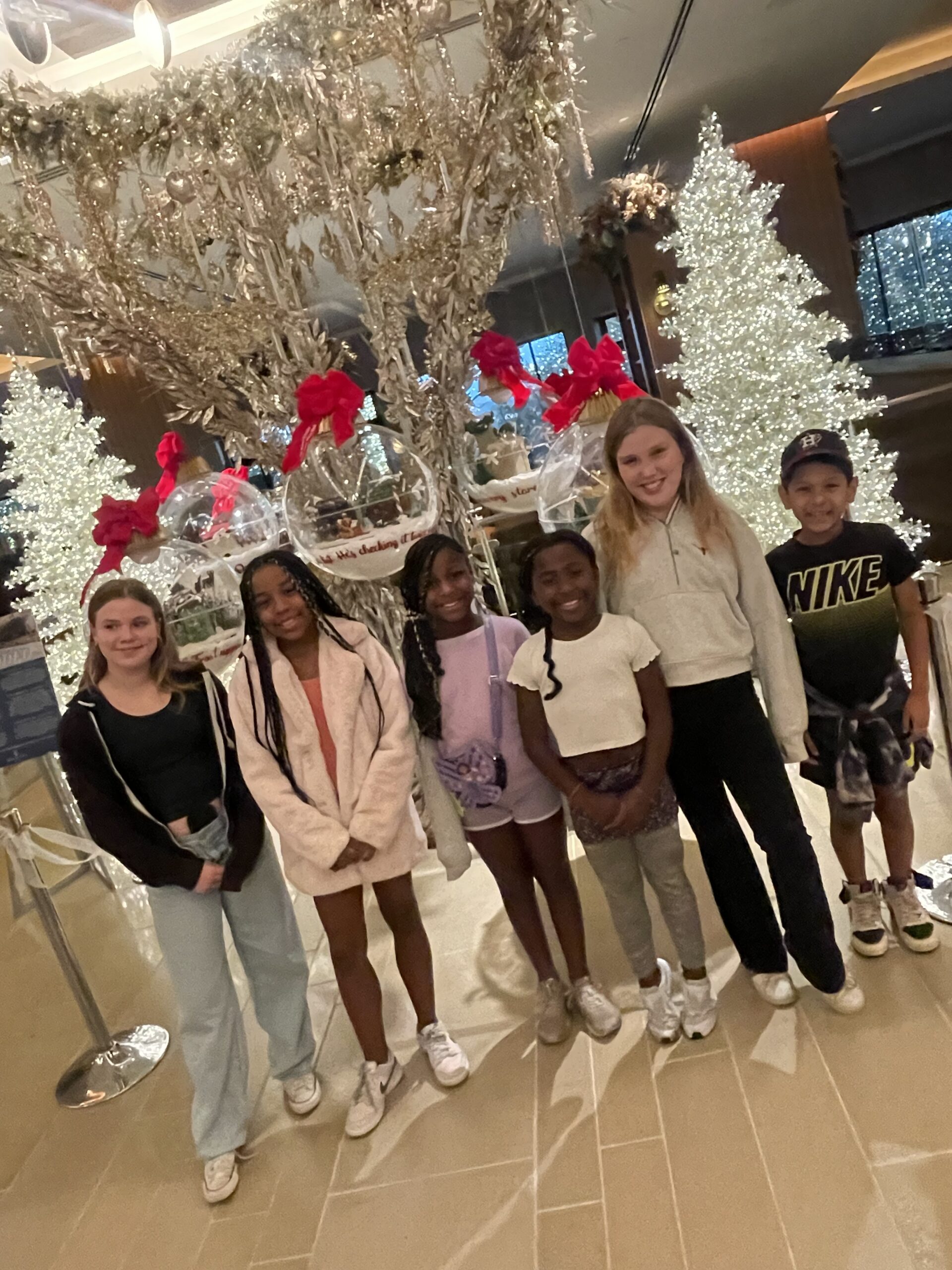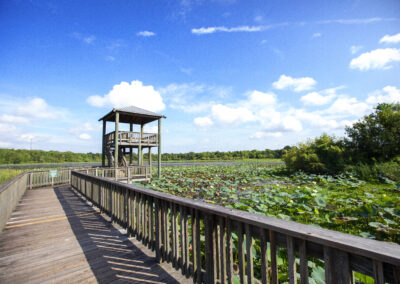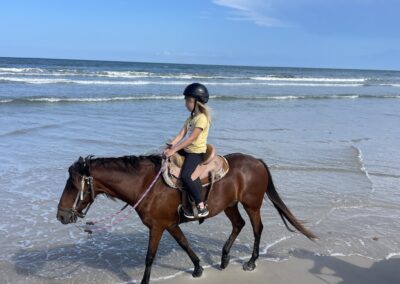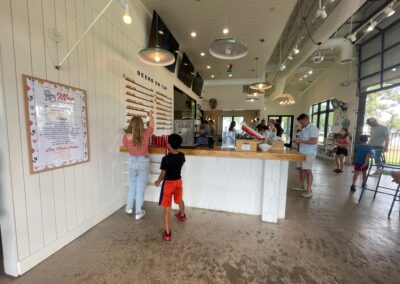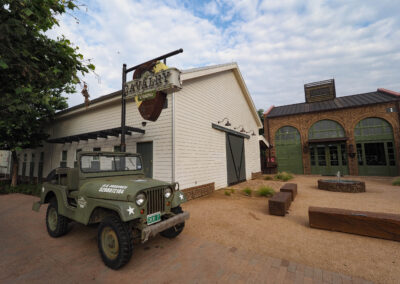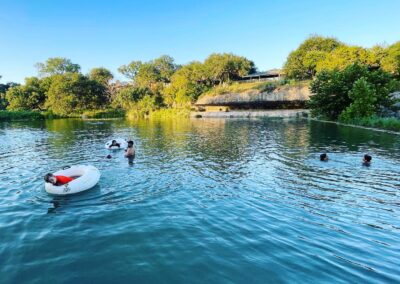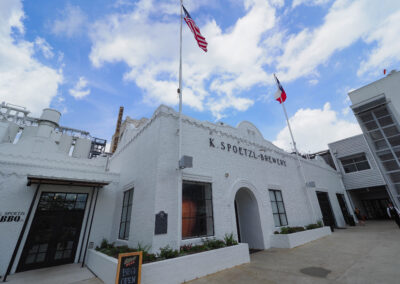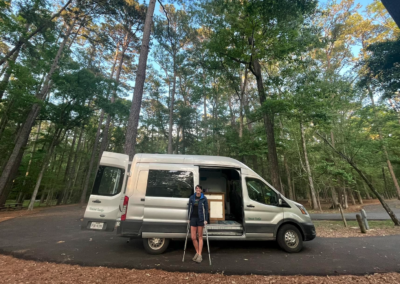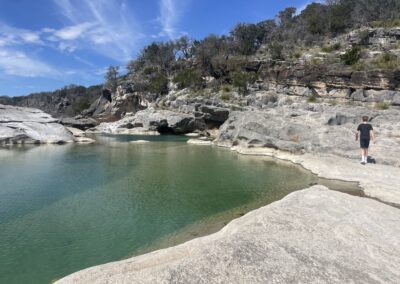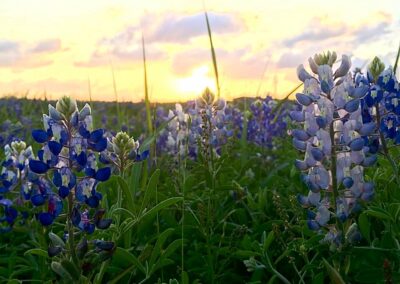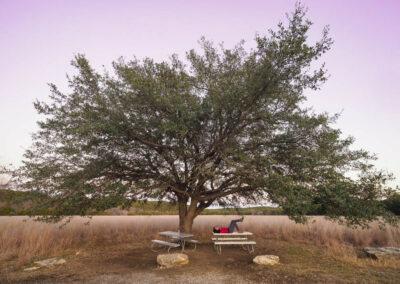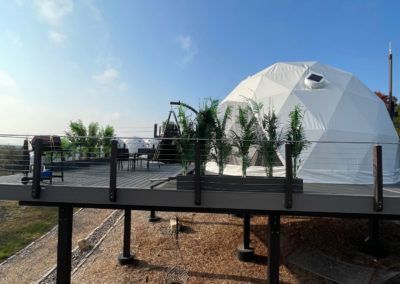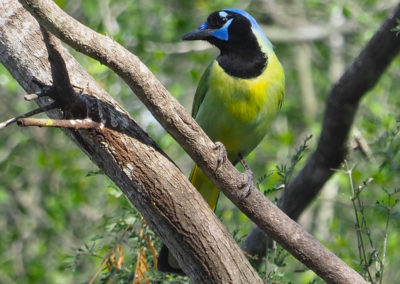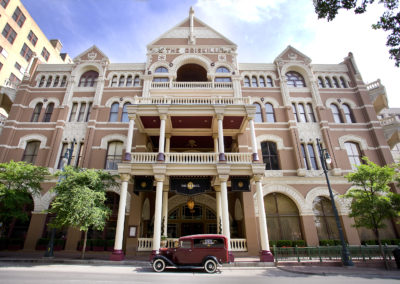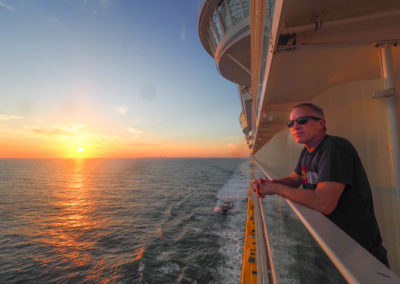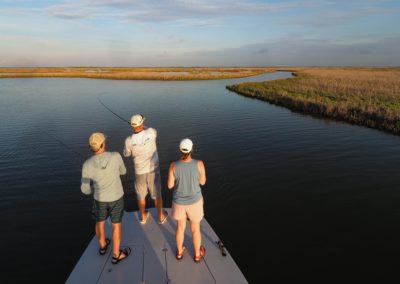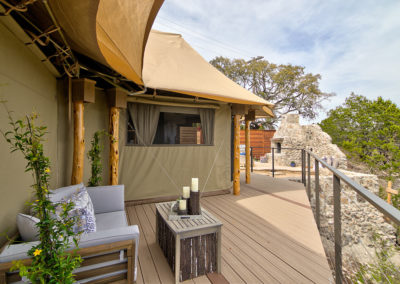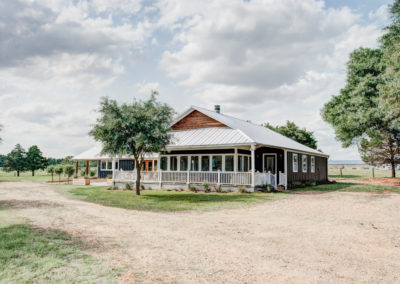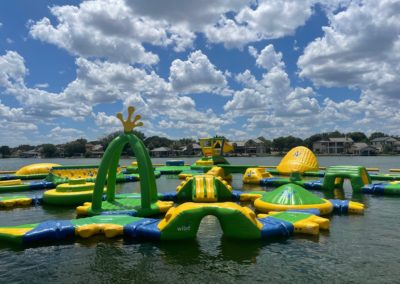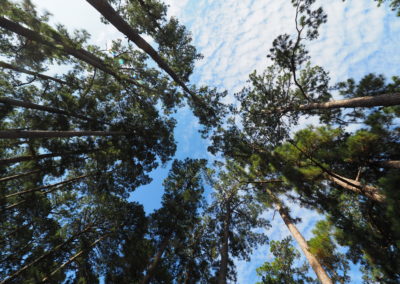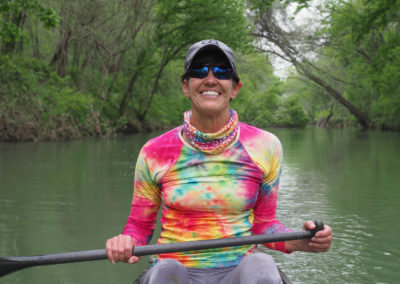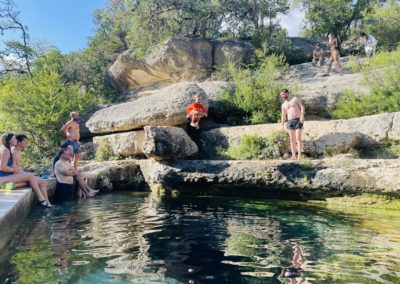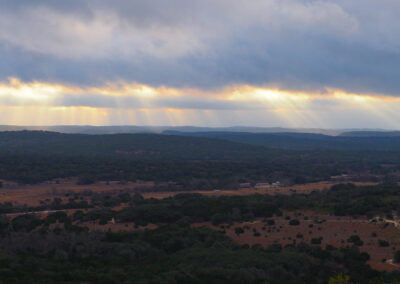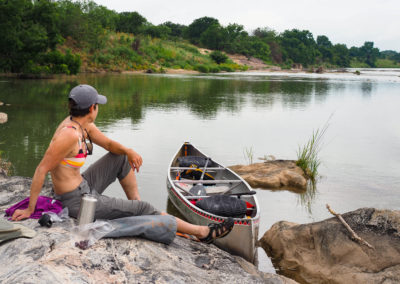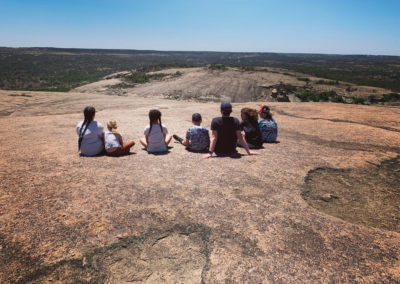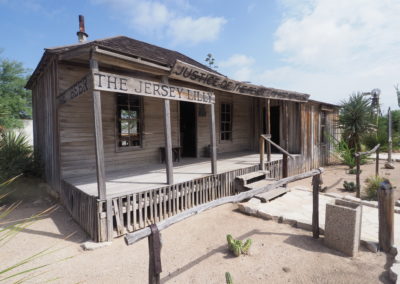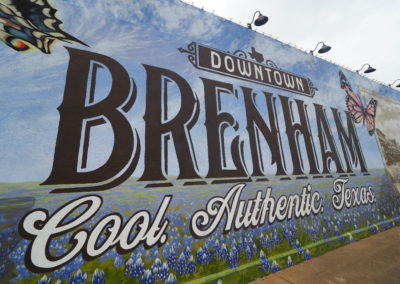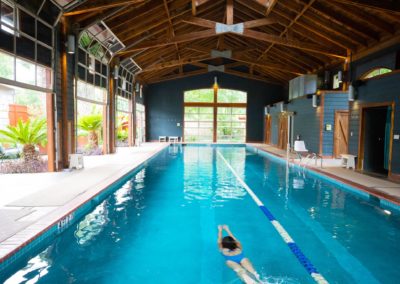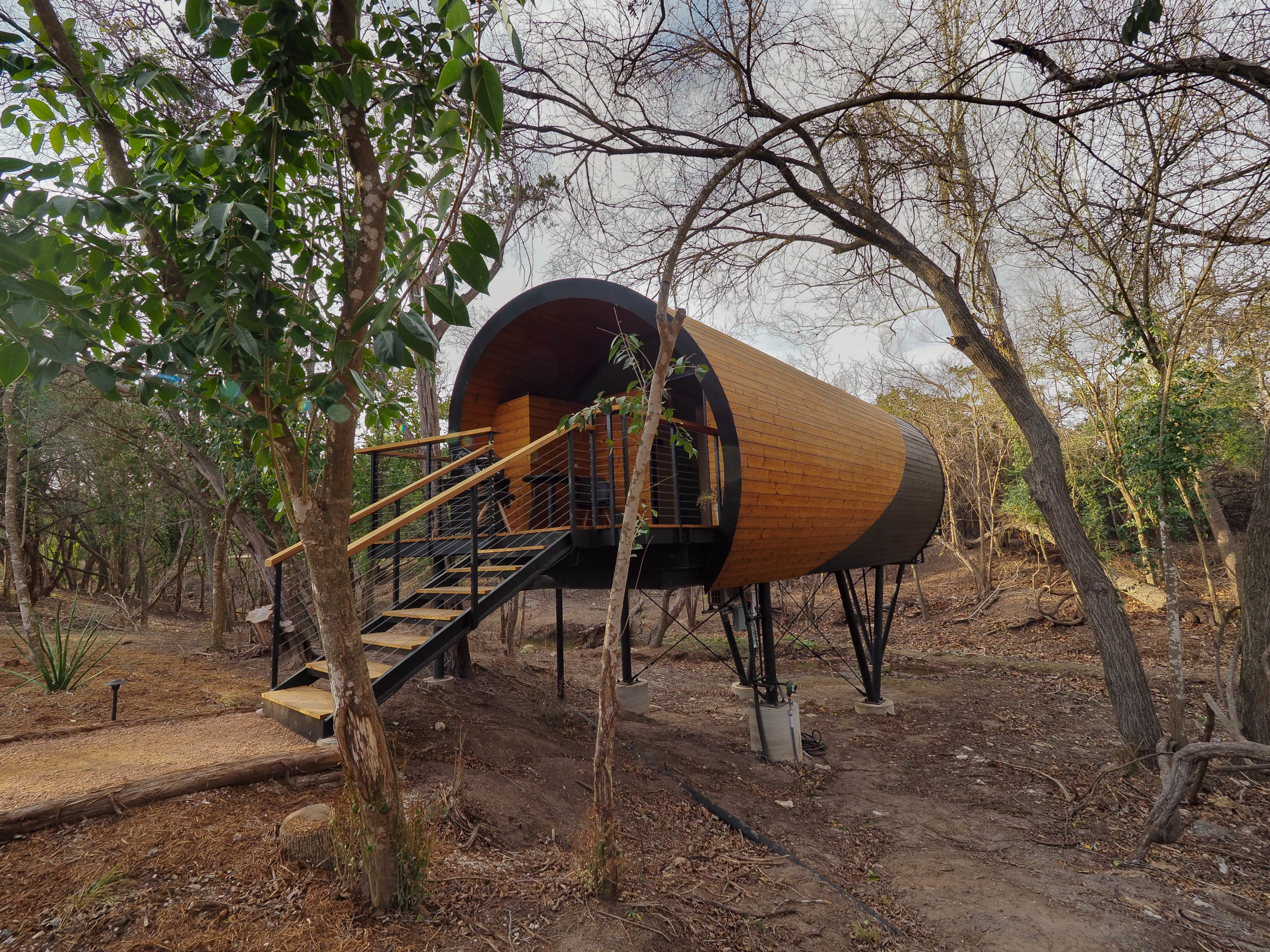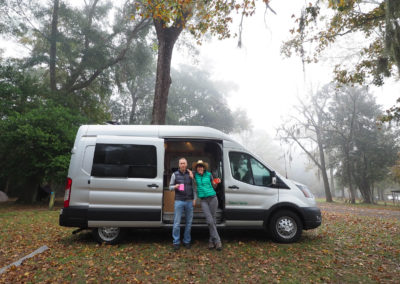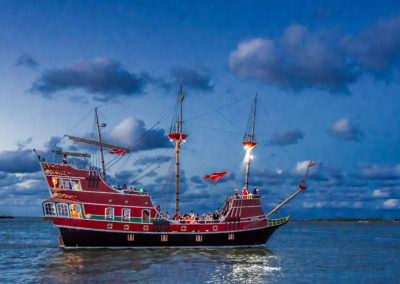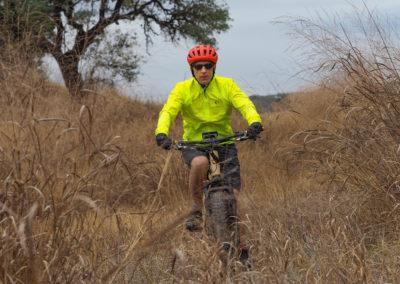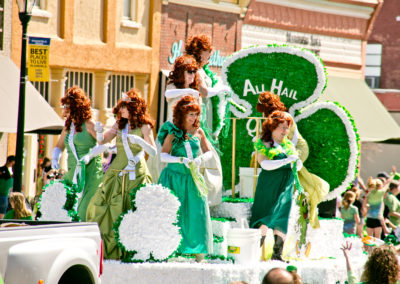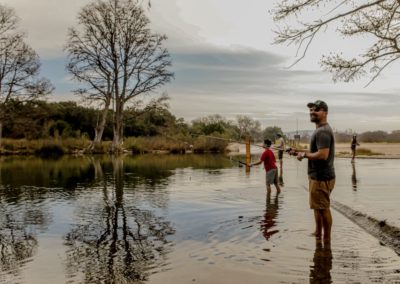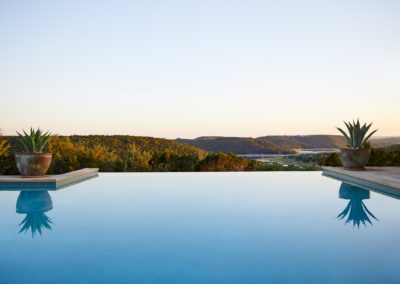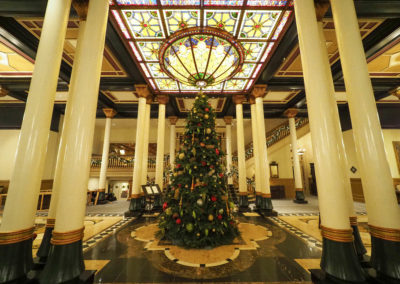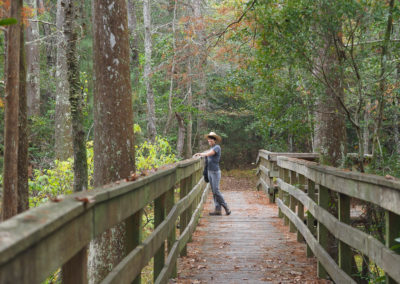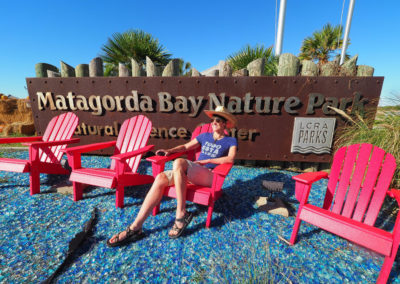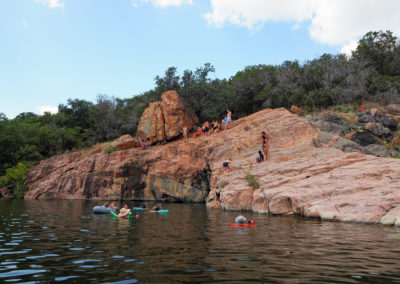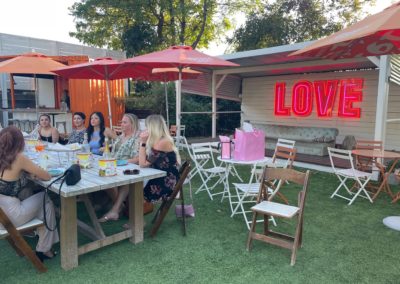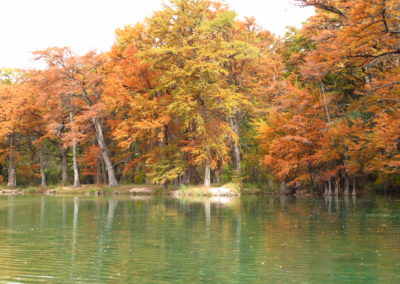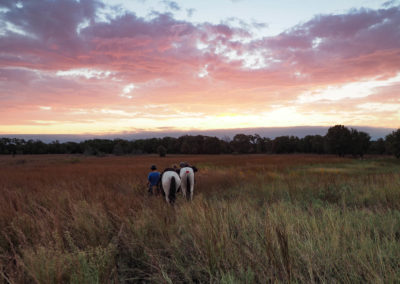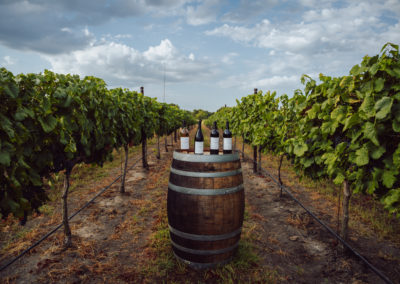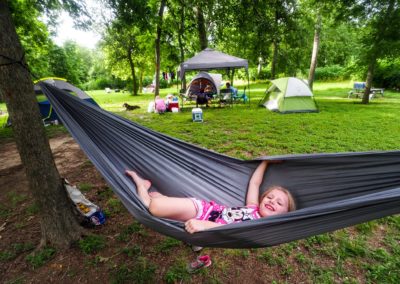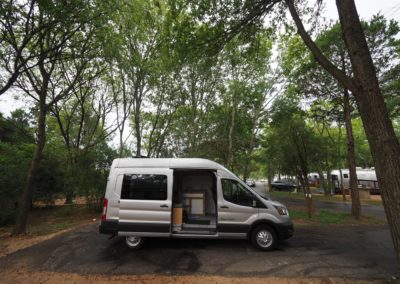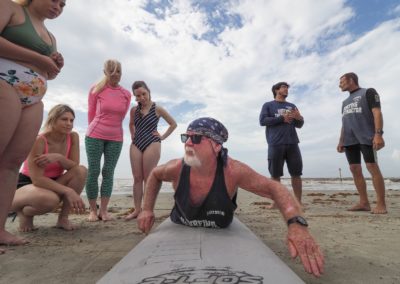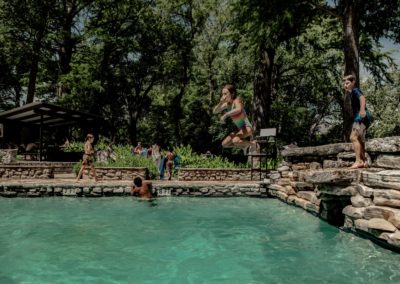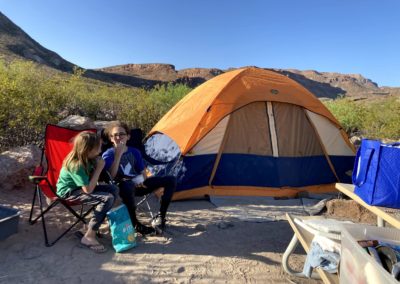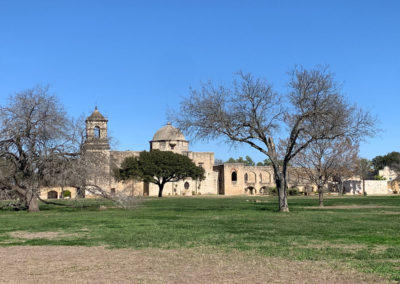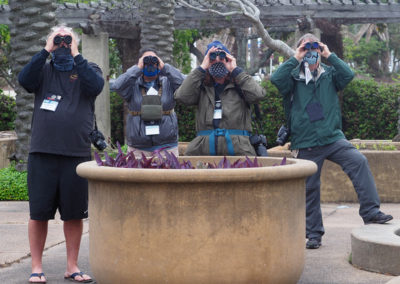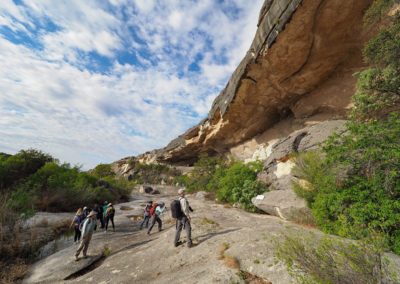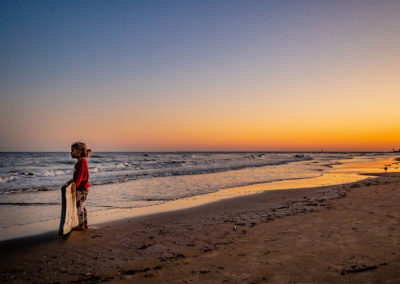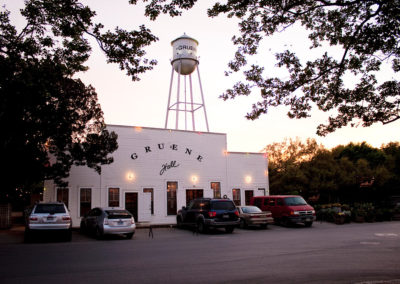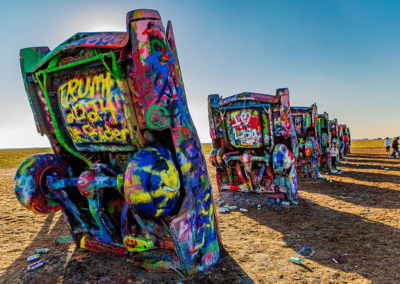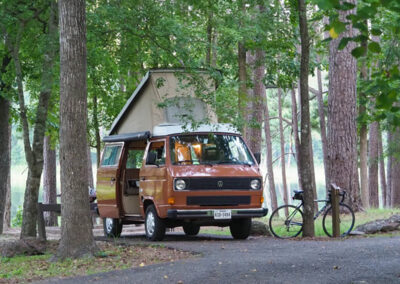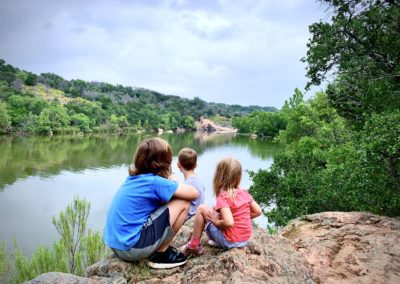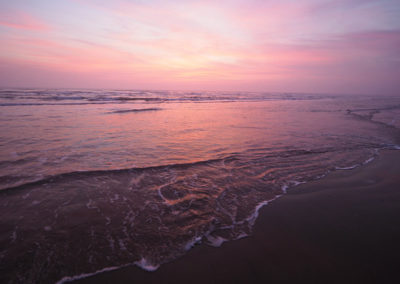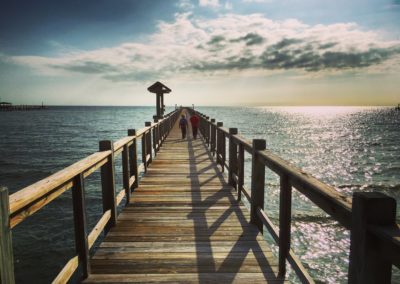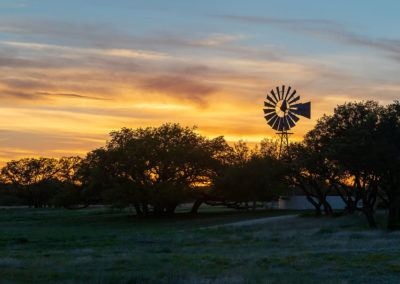Looking up at the rock walls of Seminole Canyon, I can’t stop wondering about the people who lived in this prickly desert thousands of years ago.
They slept beneath the rocky overhangs up and down this boulder-strewn wash, ate what they gathered and hunted right here in this canyon. But in many ways, I bet they weren’t so different from us. Maybe they admired the sunrises and sunsets. Children probably squabbled with their siblings, lovers no doubt snuck off to quiet canyon alcoves, and some people got along while others didn’t. It’s probably safe to say they valued art.
Archaeologists have learned a lot from what those ancient people left behind at what is now Seminole Canyon State Park and Historic Site, about 40 miles west of Del Rio. The park is known for its world-class pictographs, as well as artifacts like fiber mats and sandals found preserved for centuries inside its dry rock shelters.

The Maker of the Peace bronze sculpture by Bill Worrell stands at the top of the ridge above the Fate Bell shelter at Seminole Canyon State Park. Pam LeBlanc photo
“As an archeologist, the world-class rock art paired with incredibly well-preserved organic artifacts makes it the richest source of information about the lifeways of Native American hunter-gatherers in Texas,” says Jack Johnson, a volunteer tour guide at Seminole Canyon State Park, who is also a National Park Service archaeologist at Amistad National Recreation Area just down the highway. “We can learn so much here about how they lived, how they hunted, what they ate, and, through the lens of the rock art, we have a glimpse of how they may have thought about the world and their place in it.”
RELATED: Plan your Outdoorsy Adventure
The 2,172-acre Seminole Canyon State Park and Historic Site opened in 1980. For a good orientation to the region and the culture of the ancient people who once lived here, stop by the park’s visitor center, where a small museum explains some of the history through artifacts, photographs and written words. Eons of flooding and erosion created these canyons, exposing a layer cake of rock deposited millions of years ago. The archaic people who lived here used paint they made out of crushed minerals, animal fats and urine to create murals in the rock shelters.
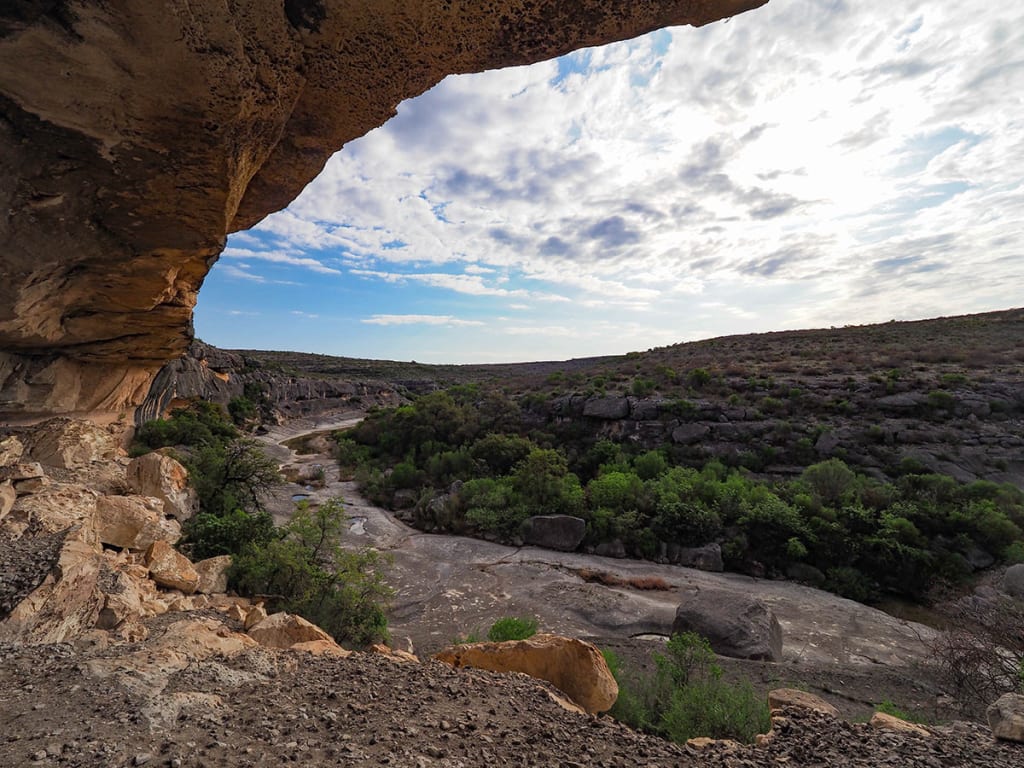
People lived in rock shelters like this one at Seminole Canyon State Park and Historic Site. thousands of years ago. Pam LeBlanc photo
Visitors can’t explore the rock shelters located within Seminole Canyon on their own, to protect the sites from vandalism, but park rangers and docents give relatively easy 90-minute guided tours to Fate Bell shelter each Wednesday through Sunday. (Pre-register at the park’s website; cost is $8 for adults.)
RELATED: 8 Great State Parks for Camping with Kids
I’ve visited twice, each time with staff members from the non-profit Shumla Archaeological Education and Research Center located in Comstock, a 15-minute drive away. The organization, founded more than 20 years ago, is working to document and digitally preserve many of the more than 300 rock art panels throughout the region––what they call “books” that tell the stories and beliefs of the people who made them up to 4,000 years ago.
“I would love to know the stories being told,” Johnson says. “I feel respect for the tough, clever ancient Native American peoples who called this area home and knew the secrets of finding food and making a living in this harsh environment as hunter-gatherers. And I feel a responsibility to take care of the sites, and to help people learn about this land and its peoples.”

These figures painted on the rock walls of the Fate Bell shelter at Seminole Canyon State Park and Historic Site are done in the Pecos River style. Pam LeBlanc photo
The tour to Fate Bell shelter starts at the visitor center, located on a ridge above the canyon. From there, you’ll walk down a trail and past “Maker of the Peace,” a 17-foot bronze sculpture of a shaman crafted by artist Bill Worrell of Mason, located 110 miles northwest of Austin. Then you’ll descend a series of steep rock steps into the canyon itself.
From there, it’s a 15-minute scamper across rocky terrain (wear comfortable shoes and only attempt if you’re reasonably fit) to the Fate Bell site, where visitors are asked to walk only on a rubber mat pathway along the outer edge of the shelter. It might take a moment for your eyes to adjust, but in a few minutes a panel of figures and designs will come into view across the wall.

The Dstretch ap enhances the color of rock art, making it more visible. Pam LeBlanc photo
University of Texas researchers excavated the site in 1932, and again in 1963 before nearby Amistad Dam was built. It was looted long before then, and workers who built the nearby Southern Pacific railroad in 1883 signed their names on the walls more than a century ago.
Nobody knows for sure, but some archaeologists speculate that the rock art may have communicated some of the culture’s belief systems, perhaps telling stories about journeys to the underworld. You’ll want to stand and contemplate the red, black and yellow designs––artwork in the Pecos River style. Look closely and you’ll see an anthropomorphic figure with its arms outstretched, holding a bundle of what looks like sticks.
During cooler months, the park also offers longer guided hikes to explore Presa Canyon and the Upper Canyon areas of the park.

Hikers look up at the Fate Bell shelter at Seminole Canyon State Park and Historic Site. Pam LeBlanc photo
“These are strenuous hikes that visit a variety of archeological sites, and immerse you in the spring-fed, boulder-filled world of the canyon bottom, which visitors normally don’t get to see,” Johnson says. “The sculpted rock and large boulders are beautiful, so very different from the surrounding uplands, and there are lots of opportunities to see wildlife.”
During my latest trip in April, our guides from Shumla led us up the canyon a mile past Fate Bell shelter. We hopped over rivulets of water and clambered through bramble patches and around Volkswagen-sized boulders to reach site 41 VV75, where we saw more outstanding examples of rock art.
Harder to get to is Panther Cave, also within the park’s boundaries, where a pair of 9-foot panthers bookend a mural featuring hundreds of other images.
The site is sometimes accessible by boat, but right now you can’t reach it because water levels are too low. The only way to see it is to hike to the overlook at the end of the park’s Canyon Rim or Rio Grande trail, a strenuous 7-mile round trip without shade. And once you get there, the view isn’t that good.
“Bring binoculars or a good telephoto lens, and of course lots of water and sun protection,” Johnson says. “From the edge of the canyon wall you can see the cave’s eponymous big red panther, and at least parts of several of the other very large rock art figures at the far right downstream end of the shelter. The rest is obscured by trees or the overhanging roof, but you can see enough to recognize what an exceptional rock art panel it is.”

Hikers hop across a stream in Seminole Canyon in April 2021. Pam LeBlanc photo
Barring that, you can always drop by the visitor center at nearby Amistad National Recreation Area, where you can inspect a high-resolution, wall-sized panorama of part of the Panther Cave mural, reproduced at about 1/4 scale. (You can also check out a video flyover of the shelter.)
“This is the best way to examine the imagery up close and in detail, though of course it lacks the ambiance of the real place,” Johnson says.
Other examples of rock art, including the not-to-be-missed White Shaman mural, are located on private land. The Witte Museum in San Antonio offers weekend tours to the site, located in a curved rock overhang near the Highway 90 bridge over the Pecos River. The hike down to the shelter and the tricky scramble to get inside are worth it––it’s the most elaborate example of rock art that the public can see in Val Verde County. The painting extends for more than 100 feet, and includes brightly squiggled lines, human-shaped figures and something that looks to me like a choo-choo train.
They all leave me wondering what they mean, and I keep imagining the murals when they were bright and new, drawing eyes like fine art billboards perched high on canyon walls. Who were the artists? Why did they paint the murals here? Did people take trips to the area just to see them?
For now, the rock walls aren’t telling.
If You Go

Getting there:
Seminole Canyon State Park and Historic Site is located 9 miles west of Comstock at 434 Highway 90 West at Park Road 67. It takes about five hours to drive there from Austin. For more information go to www.tpwd.texas.gov/seminolecanyon or call 432-292-4464.

Stay:
Book a room at the Comstock Motel, 31984 Highway 90, 15 minutes away, where $60 gets you a clean, tidy room and access to a covered pavilion equipped with an outdoor grill. Or stay in Del Rio and make the 45-minute drive to the park. The park has a campground, but it’s currently closed due to construction.
Do:
Admission to the park is $4 (free for ages 12 and under). Guided tours to the Fate Bell shelter are offered Wednesdays through Sundays for $8 for adults or $5 for ages 5 to 12. During the spring and fall, the park also offers a day-long backcountry hike to see rock art in the more remote areas of Seminole and Presa canyons for $25 per person. Hiking and mountain biking are allowed on the rest of the park’s roughly 10 miles of trails. Check out the museum exhibits in the park’s visitors center, and see the towering “Maker of Peace” sculpture by Mason resident Bill Worrell.
Eat and Drink:
Don’t let the homemade “Eat Here” sign on a pole out front dissuade you. J and P Bar and Grill, 32137 Highway 90 in Comstock, really is good, and it serves up what my photographer pal calls the best chicken-fried steak in all of Texas––served with grilled mushroom sauce instead of the traditional white cream gravy. The burgers are fantastic, too.

Pro Tip:
While you’re in the area, take a tour of the White Shaman site. The Witte Museum in San Antonio offers tours at 12:30 p.m. Saturdays from September through May. Cost is $20 for adults; ages 12 and up only. For more information go to https://www.wittemuseum.org/rock-art/. You’re also not far from Langtry, where you can drop by the Judge Roy Bean Visitor Center to see where the notorious official doled out his version of justice in a wood-planked building that served simultaneously as a saloon, pool hall and courtroom. For more information go to https://texaspecostrail.com/plan-your-adventure/historic-sites-and-cities/sites/judge-roy-bean-visitor-center#_=_pam.











